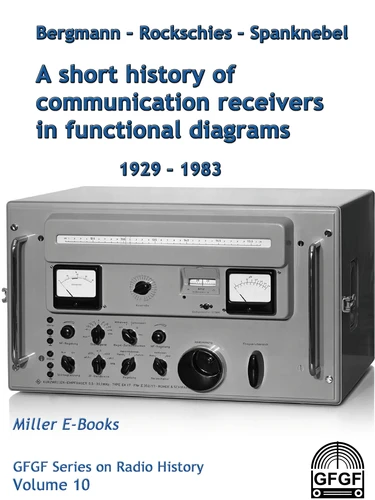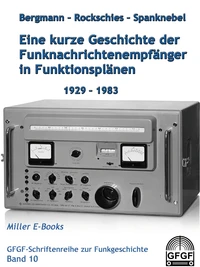A short history of radio communication receivers in functional diagrams. GFGF series on Radio History
Par : , , ,Formats :
Disponible dans votre compte client Decitre ou Furet du Nord dès validation de votre commande. Le format ePub est :
- Compatible avec une lecture sur My Vivlio (smartphone, tablette, ordinateur)
- Compatible avec une lecture sur liseuses Vivlio
- Pour les liseuses autres que Vivlio, vous devez utiliser le logiciel Adobe Digital Edition. Non compatible avec la lecture sur les liseuses Kindle, Remarkable et Sony
 , qui est-ce ?
, qui est-ce ?Notre partenaire de plateforme de lecture numérique où vous retrouverez l'ensemble de vos ebooks gratuitement
Pour en savoir plus sur nos ebooks, consultez notre aide en ligne ici
- Nombre de pages64
- FormatePub
- ISBN978-3-95600-954-9
- EAN9783956009549
- Date de parution12/12/2022
- Protection num.Digital Watermarking
- Taille11 Mo
- Infos supplémentairesepub
- ÉditeurMiller E-Books
Résumé
This book gives an insight into the long technical development of radio message receivers for commercial radio services and the amateur radio service over the period from 1929 to 1983, i.e. from the age of electron tube technology to the first proven phase of semiconductor technology.
The authors have conducted worldwide radio communications within the framework of amateur radio over three decades, thereby becoming acquainted with the often extreme demands that message receivers should be able to cope with, and analysing over 70 radio message receivers or receiver parts of transceivers in the process.
For anyone who collects such equipment or wants to learn how it works, the functional diagrams compiled here will provide the best possible help.
The extensive bibliography and list of sources open up numerous avenues for more in-depth study or the procurement of documents.
The extensive bibliography and list of sources open up numerous avenues for more in-depth study or the procurement of documents.
This book gives an insight into the long technical development of radio message receivers for commercial radio services and the amateur radio service over the period from 1929 to 1983, i.e. from the age of electron tube technology to the first proven phase of semiconductor technology.
The authors have conducted worldwide radio communications within the framework of amateur radio over three decades, thereby becoming acquainted with the often extreme demands that message receivers should be able to cope with, and analysing over 70 radio message receivers or receiver parts of transceivers in the process.
For anyone who collects such equipment or wants to learn how it works, the functional diagrams compiled here will provide the best possible help.
The extensive bibliography and list of sources open up numerous avenues for more in-depth study or the procurement of documents.
The extensive bibliography and list of sources open up numerous avenues for more in-depth study or the procurement of documents.




